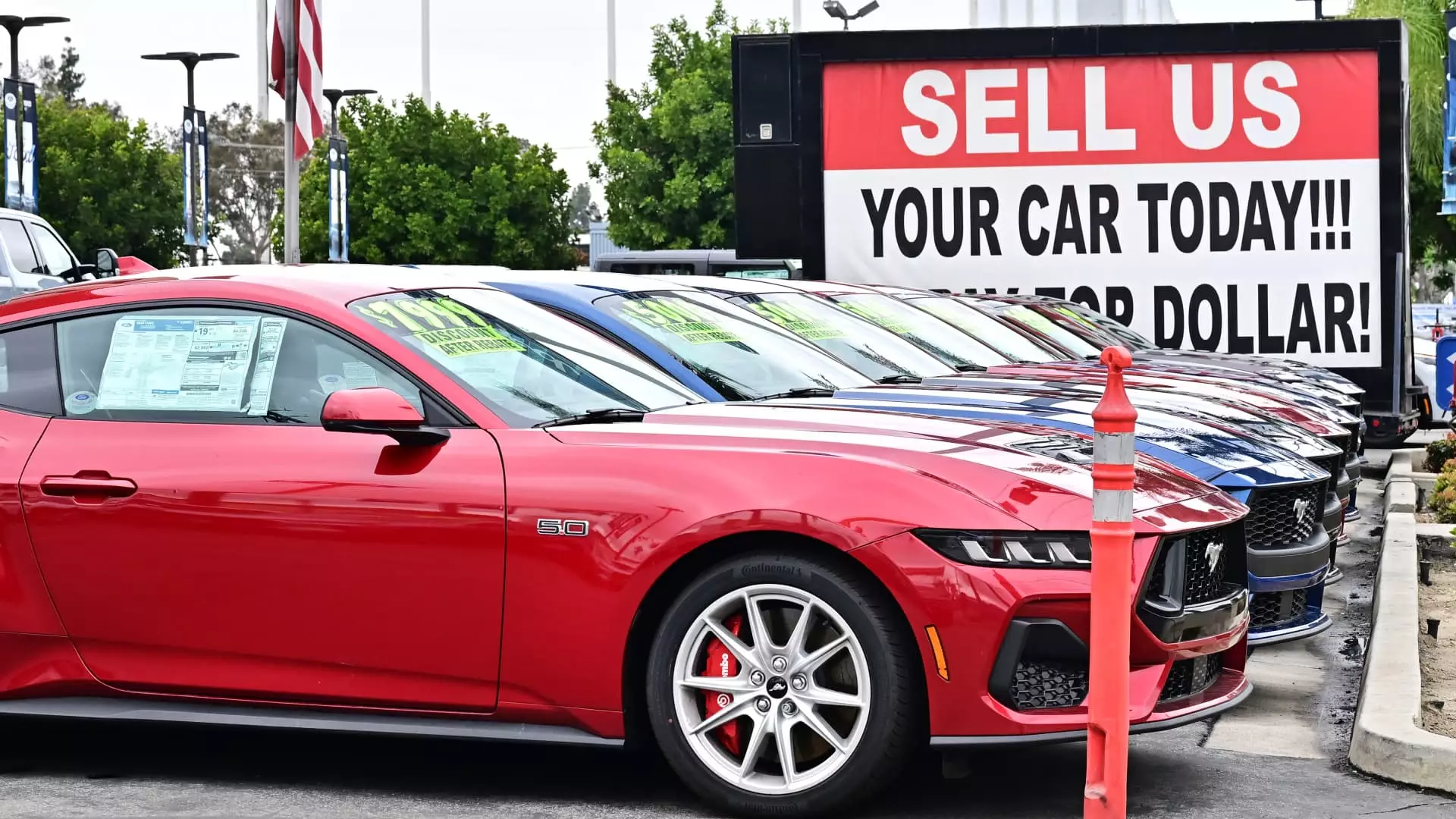In recent months, the used vehicle market has exhibited a turbulent yet intriguing ebb and flow. The seemingly endless rise in prices finally experienced a cooling period from April to May, as reported by Cox Automotive’s Manheim Used Vehicle Value Index. A 1.5% decrease in used vehicle prices has emerged amidst broader economic uncertainties, revealing critical insights about consumer behavior and market resilience.
What is particularly noteworthy is that despite this recent dip, prices still remain significantly elevated—approximately 4% higher compared to the same period last year. This discrepancy highlights a dual reality: while short-term fluctuations may momentarily ease, the long-term trajectory of prices is stubbornly upward. Jeremy Robb, a senior director at Cox Automotive, underscores this point by connecting the dots between wholesale value trends and retail prices. Consumers often face a lag when wholesale prices drop, leading to a mismatch that can frustrate potential buyers.
The Ripple Effects of Tariffs on Consumer Choices
Although tariffs instituted during the Trump administration are primarily targeted at new vehicle imports, their repercussions are felt throughout the used car market as well. A 25% tariff on new vehicles inevitably affects the retail landscape, pushing consumers toward used options, which can momentarily inflate demand. Herein lies a paradox: while tariffs aim to bolster domestic manufacturing, they inadvertently squeeze the pocketbooks of everyday Americans, prompting them to consider pre-owned vehicles as viable alternatives.
Yet, with used vehicle inventories languishing at historical lows—approximately 2.2 million units—supply cannot immediately meet this heightened demand. This incongruity illustrates how consumers are caught in a cycle of rising prices and diminished availability, suggesting that the market may be reaching a critical juncture. The prolonged retention of vehicles by owners further complicates the scenario, limiting the supply of used cars on dealership lots and exacerbating price pressures.
Coping with a Complicated Economic Landscape
The coronavirus pandemic and ensuing global supply chain issues have not only slowed new vehicle production; they have also inadvertently shaped the used vehicle marketplace. As consumers cling to their vehicles longer, the dynamics of supply and demand shift dramatically, creating a market where those who can afford to wait may ultimately benefit, while those in urgent need of a vehicle may feel compelled to pay inflated prices.
In this environment, it is essential to recognize that used vehicle prices are not just a fleeting statistic—they represent consumer confidence, economic stability, and broader societal shifts. The dual narrative of rising demand against a backdrop of dwindling supply suggests that we may be entering a period of stabilization within the used car market, but not without its growing pains.
The prospects of a more resilient economic landscape depend heavily on how policymakers respond to the underlying issues driving both automotive and broader economic trends. As they navigate these complexities, consumers should remain vigilant, as the factors influencing used vehicle prices continue to evolve in unpredictable ways.


Leave a Reply